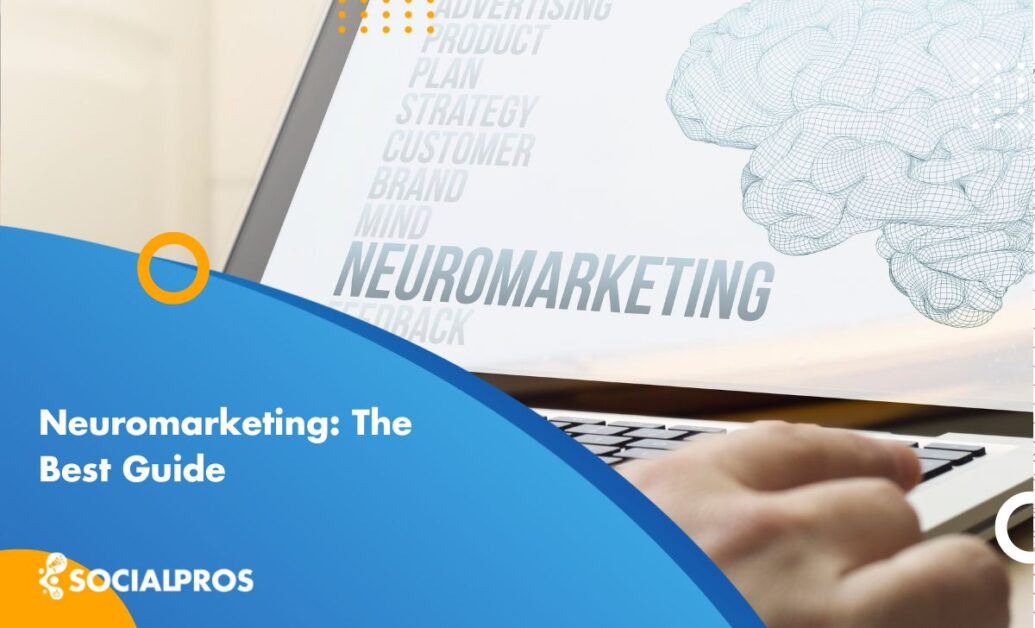Page Contents
Navigating today’s competitive business landscape, and connecting with your customers on a deeper level to truly understand the complexities of their decision-making is a vital key to unlocking success.
Neuromarketing, a fascinating digital marketing technique that combines neuroscience and marketing, has risen as an influential tool to delve into the consumer’s mind and sway their choices, making sure your marketing efforts pack the most punch.
Within the realm of digital marketing, where every click counts, adopting neuromarketing principles can significantly boost the success of your campaigns, alongside increasing sales and customer satisfaction.
Neuromarketing: A Brief Overview
Neuromarketing uses techniques and knowledge from cognitive neuroscience to better understand the mental processes behind consumer decision-making.
By analyzing brain activity and responses, marketers can gain insights into the factors that drive people to purchase, share content, or engage in other behaviors important to businesses.
Merging this newfound knowledge with tried-and-true marketing tactics enables businesses to create more compelling and impactful marketing messages that genuinely connect with their target audience.
Digital marketing, with its emphasis on data and analytics, is a natural fit for the application of neuromarketing principles. From web design and content creation to social media advertising and email campaigns, digital marketers can leverage insights from neuromarketing to optimize their efforts and drive better results.
Neuromarketing Techniques in Digital Marketing
The intriguing realm of neuromarketing abounds with captivating methods that seamlessly blend into digital marketing tactics. Among these, a few standout techniques have proven to be especially effective and popular:
1. Eye-tracking: By monitoring the eye movement of consumers, digital marketers can identify which elements of a website, email, or advertisement draw the most attention, and analyze their customers’ behaviors. This information can then be used to optimize the placement of critical information, calls-to-action, or other conversion-related elements.
For example, Casinowhizz.com effectively uses eye-catching visuals and user-friendly layouts to draw the attention of potential customers, which in turn increases the likelihood of their conversion.
2. Emotional triggers: Understanding the emotions that motivate consumer behavior is a key aspect of neuromarketing. Digital marketers can leverage this knowledge to create content or advertisements that evoke specific emotions, ranging from happiness and surprise to fear and anxiety.
Onlinecasinos2.com totally nails it when it comes to embracing the rush and anticipation that players feel while diving into the exhilarating universe of online gambling. By using visuals, colors, and language that elicit these emotions, they create an engaging user experience likely to encourage visitors to explore their content further.
3. Cognitive biases: Our fascinating brains are often influenced by certain biases, and with the help of neuromarketing research, digital marketers can tap into these tendencies to make their digital marketing strategies more effective.
For example, the scarcity principle states that people tend to perceive items as more valuable when they are limited in availability. A digital marketer can use this principle in email marketing campaigns or online promotions, highlighting limited-time offers or exclusive products to create a sense of urgency and drive conversions.
4. Social proof: We can’t help but let the thoughts and actions of others impact our own, particularly when we share a connection or find common ground with them.
Savvy digital marketers tap into this by using social proof in a variety of ways, like sharing customer testimonials, showcasing ratings, or even getting a nod on social media from influencers.
By sprinkling in real-life examples of happy customers, glowing reviews, or big-name endorsements, marketing messages become much more powerful and persuasive.
5. Choice architecture: Insights from neuromarketing reveal that the manner in which options are laid out for customers plays a crucial role in shaping their decision-making journey.
Digital marketers can apply this knowledge by carefully designing the layout, visuals, and language used in their campaigns to guide users toward the desired outcome.
For instance, marketers might use contrasting colors to make a call-to-action stand out or use descriptive language to help users envision the benefits of a product or service.
Additionally, offering a limited number of options can reduce decision fatigue and increase the likelihood of conversion.
Leveraging Neuromarketing for Better Digital Marketing Outcomes
To make the most of neuromarketing in digital marketing, businesses should follow these steps:
1. Conduct research: Understand the target audience’s demographics, preferences, and behaviors to identify the most effective neuromarketing techniques for your specific market.
2. Test and iterate: Implement neuromarketing strategies in marketing campaigns and analyze the results. Use A/B testing to compare the effectiveness of different tactics and make data-driven decisions about content, design, and messaging.
3. Collaborate with experts: Partner with neuromarketing professionals or researchers to access the latest knowledge, techniques, and technologies in the field.
4. Continuously learn: Stay updated on the latest developments in neuromarketing research and explore new tactics to optimize digital marketing efforts further.
5. Prioritize ethics: It’s crucial to balance the pursuit of marketing effectiveness with ethical considerations. While neuromarketing can indeed offer businesses valuable insights to better understand and cater to their customers, it’s crucial to remain mindful of striking a balance and steering clear of any manipulative tactics that could potentially hurt consumers or tarnish a brand’s image.
Conclusion
As the digital marketing world rapidly changes with each passing day, businesses must stay on their toes, grabbing every chance they get to engage customers and win their trust for long-lasting relationships.
Neuromarketing provides a priceless gateway into understanding the thoughts and emotions of customers, empowering marketers to craft impactful and persuasive campaigns that truly resonate with their audience.
By understanding the mental processes behind consumer decision-making, digital marketers can strategically leverage neuromarketing techniques to optimize their efforts and improve the overall success of their campaigns.
By combining scientific insights with creativity and innovation, businesses can ensure they stay ahead of the competition and maintain a strong connection with their target audience.





